Do you want to make your Venus flytrap plant the envy of all your gardening friends? With a few simple steps, you can have yourself a huge, healthy plant that will last for years. In this article, we’ll explore how long it takes for a Venus flytrap to grow, what kind of conditions it needs to thrive, and how to make a Venus flytrap grow big. So come along with us on this journey and watch your little plant blossom into something truly spectacular!
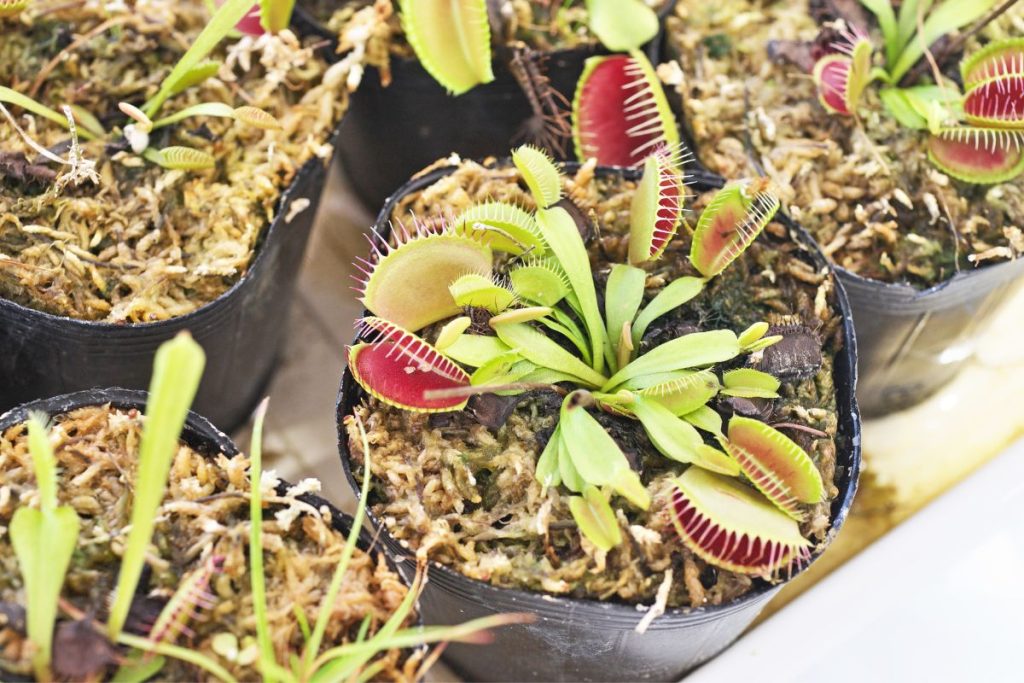
Contents
- 1 How Big Do Venus Fly Trap Plants Get?
- 2 How Long Does It Take For A Venus Fly Trap To Grow?
- 3 How To Make A Venus Flytrap Grow Big
- 3.1 Ensure Proper Lighting for Your Plant
- 3.2 Water the Plant from the Bottom
- 3.3 Opt for a Soil Mix that Provides Good Airflow
- 3.4 Provide Nutritious Meals for Your Plant
- 3.5 Select an Appropriate Pot
- 3.6 Prevent Soil Compression by Periodically Repotting
- 3.7 Discourage Flowering in Your Plant
- 3.8 Allow Your Plant to Enter Dormancy Each Year
- 3.9 Prune any Black Leaves
- 3.10 Separate Multiple Plants to Accommodate Bulb Root Reproduction
- 3.11 Choose from a Wide Range of Venus Flytrap Varieties
- 4 How to Propagate Venus Flytrap
- 5 Pests and Problems
- 6 Conclusion
How Big Do Venus Fly Trap Plants Get?
Venus flytrap plants, also known as Dionaea Muscipula, are not particularly large in size. You can expect mature Venus flytraps to reach a maximum size of 1 foot in height, a trap size of 1-2 inches, and 5 inches in diameter. It is worth noting that while some varieties of Venus flytraps grow more vertically, others tend to hug the ground and exhibit more horizontal growth.
Under proper growing conditions, Venus flytraps can experience growth incentives, and certain cultivars may exhibit larger trap sizes. If you come across different variations of Venus flytraps, several cultivars are known for their larger size. Some well-known examples include:
- Akai Ryu or Red Dragon
- Dionaea Dente
- Dionaea Green Dragon
- King Henry
- Dionaea Ginormous
- Dionaea B-52
The last two cultivars mentioned, Dionaea Ginormous and Dionaea B-52, are particularly noteworthy for their large traps. In fact, they are considered some of the largest Venus flytrap varieties available. Their traps can reach up to two inches in length, which is double the expected size of a standard Venus flytrap.
If you’re interested in growing Venus flytraps, keep in mind that their size can vary depending on the specific cultivar and growing conditions. Nonetheless, even standard Venus flytraps can be fascinating plants to observe as they capture medium-sized insects with their unique traps.
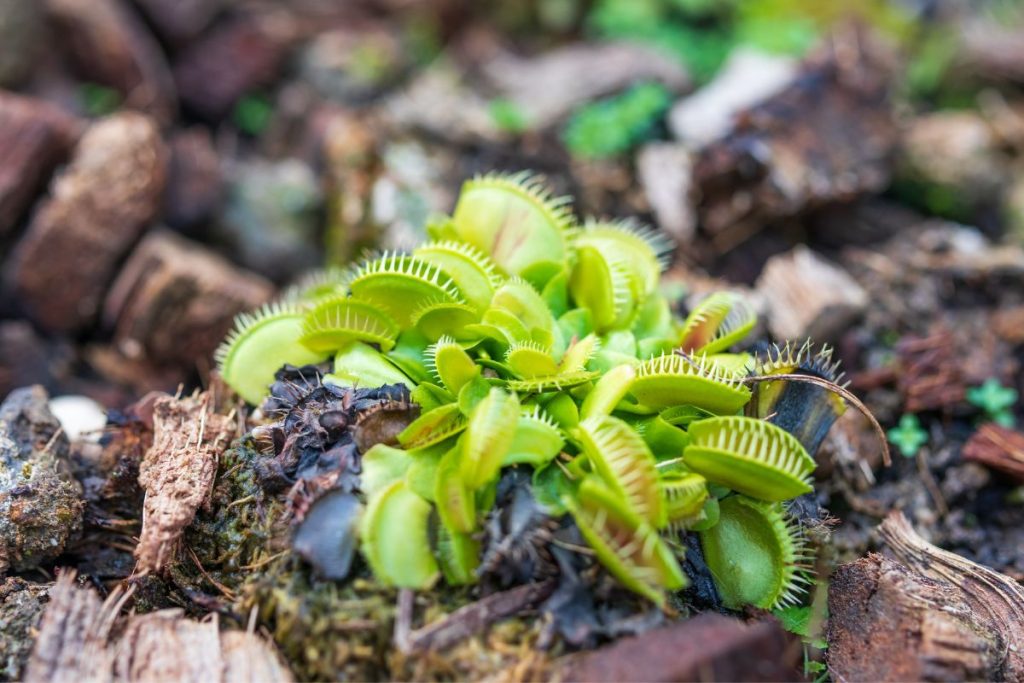
How Long Does It Take For A Venus Fly Trap To Grow?
It typically takes 3-4 years for your flytrap to reach its full size. During that time, the plant will go through several stages of growth.
Venus flytraps have a gradual life cycle, starting from tiny black seeds and progressing to seedlings with traps only a few millimeters long. The plant experiences significant growth during the first four years of its life. As it matures over the course of 4-6 years, it will reach its full size with traps 1 inch in length and 5-6 inches in diameter. At this stage, the plant achieves full maturity and begins producing flowers annually.
After the initial six years, the plant will continue growing at a slower rate and can even surpass the average size if cared for properly. Once Venus flytraps have reached their full size, they can flourish for 15 years or more, provided they receive proper care and the right environmental conditions.
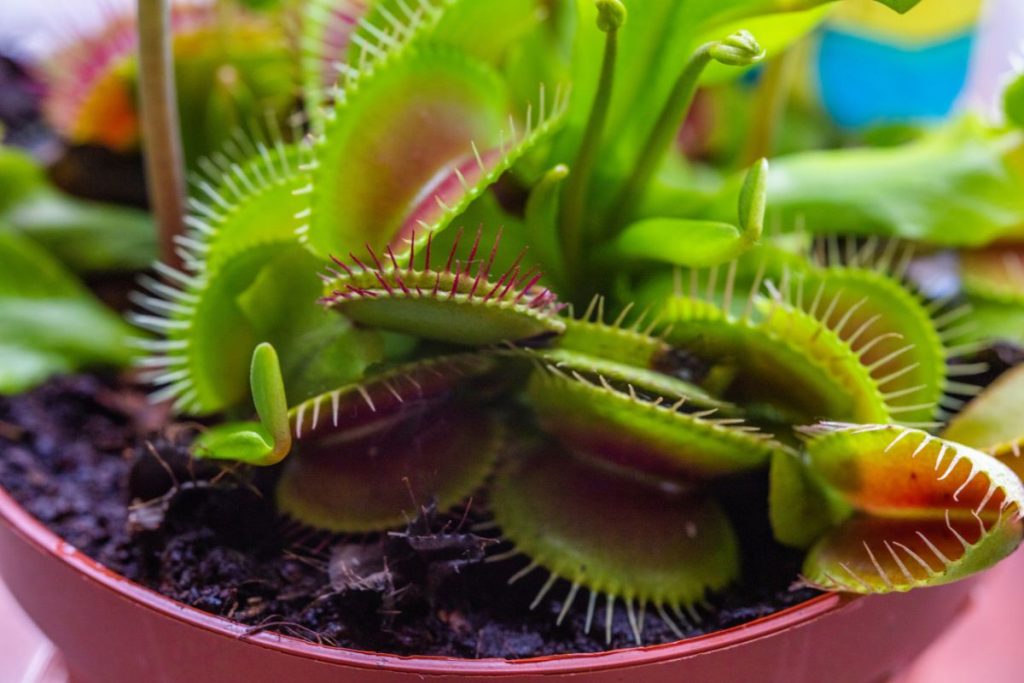
How To Make A Venus Flytrap Grow Big
In this section, we will explore various techniques and guidelines to help you maximize the growth potential of your Venus flytraps. By implementing these methods, you can create an environment that encourages your plants to reach impressive sizes. Let’s dive into the strategies that will help you make your Venus flytraps grow big and thrive.
Ensure Proper Lighting for Your Plant
Give your Venus flytrap the light it needs to stay healthy and strong by providing 12 hours of direct sunlight a day or supplementing with artificial light. You can use high-output fluorescent lighting, LED plant lights, or other forms of artificial lighting to ensure your plant gets enough light.
Natural sunlight is the best way to go if possible; however, if you need to supplement with artificial lighting make sure you research what type of lights work best for Venus flytraps. LED vs fluorescent lights should be considered when choosing the right form of artificial lighting for your plant as well as finding the best lighting setup for optimal growth.
Water the Plant from the Bottom
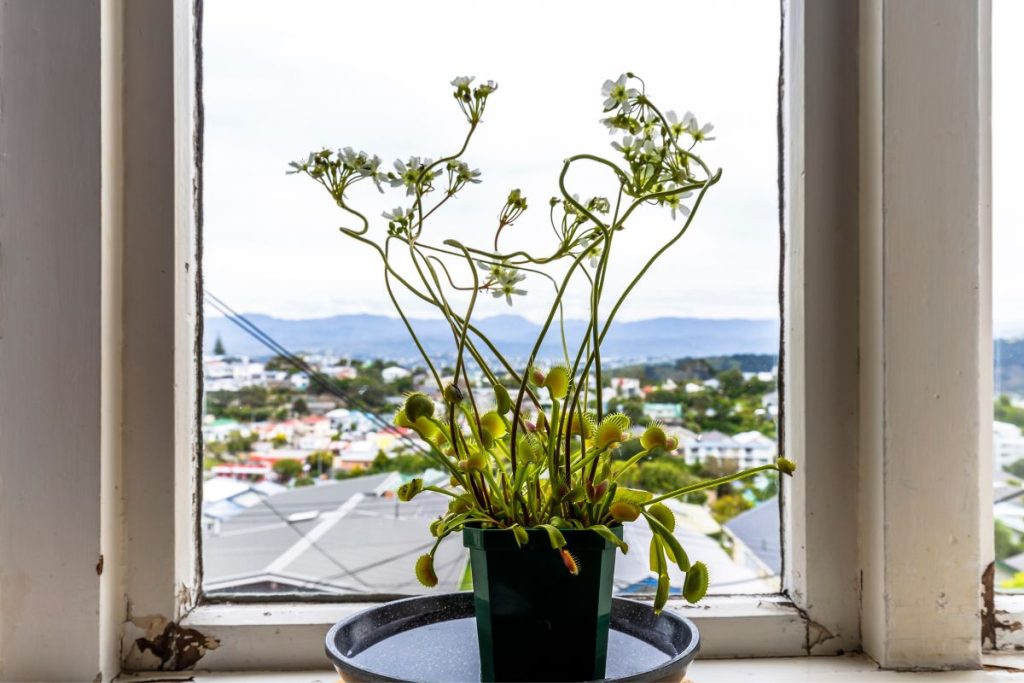
Watering from the bottom can help prevent overwatering and encourage root growth. It is a great method for Venus flytraps, as well as other plants. Compared to watering from the top, it offers more benefits such as avoiding mineral deposits in the soil and protecting against excess water.
To create a self-watering system for your Venus flytrap, make sure the pot has drainage holes, place it on a shallow plate with no more than an inch of water in it, and then wait for it to absorb. Repeat when necessary but don’t let your plant dry out completely. Bottom watering can also be effective for other carnivorous plants so do some research before deciding which method works best for you!
Opt for a Soil Mix that Provides Good Airflow
To ensure your Venus flytrap grows big and healthy, it’s important to choose the right soil mix. Many opt for long-fibered sphagnum moss or peat moss, but these alone won’t prevent soil compression. To avoid this, you should mix them with sand or perlite in a ratio of 2:1 or 4:1, with more moss than sand or perlite. This will help air circulate and improve drainage for your plant. Coir composting is also an option to provide plants with light requirements as well as soil drainage. With the right mix of soils and other elements, your Venus flytrap will be able to thrive!
Provide Nutritious Meals for Your Plant
Provide your Venus flytrap with a nutritional boost by feeding it healthy meals. Bugs and arachnids make up the ideal diet for the plant, as they contain important elements that can help stimulate growth and development. Choose bugs that are no more than 1/3 of the size of the lobes to fit inside the trap.
Stick to an insect-based diet instead of human food, as flytraps cannot digest these types of meals. Feed your plant once every 4-6 weeks, but avoid doing so during dormancy. Properly feeding your Venus flytrap provides numerous benefits such as improved health and faster growth rate.
Select an Appropriate Pot

To ensure your Venus flytrap grows big, choose a pot that is at least 4-5 inches in diameter and 6 inches deep. This size of container provides enough vertical space to accommodate the plant’s large roots. If the pot is too small, the growth of your Venus flytrap will be restricted.
When selecting a new pot for your plant, consider choosing one with wider sides as this type of container allows for more room around the base of the plant. As your Venus flytrap matures, you may need to transition it to a larger pot to keep up with its growing needs. Always take into consideration both depth and width when choosing a new home for your Flytrap!
Prevent Soil Compression by Periodically Repotting
Repotting your plant periodically will help reduce soil compression and keep it healthy. This is especially important for Venus flytraps, as their roots can struggle to expand in compressed soil. Repotting yearly at the end of dormancy has many benefits, such as providing fresh soil for the start of the growing season.
Fresh soil helps prevent compression and gives the plant a boost in nutrients. It also offers more room for root growth, helping your Venus flytrap become bigger and stronger over time. Repotting regularly is an important part of keeping your plant healthy and preventing any issues due to compacted ground.
Discourage Flowering in Your Plant
It’s important not to let your plant flower, as it can weaken the plant and cause it to suffer. To prevent flowering, be sure to cut off any flower stalks you see as soon as possible. Doing so will save the plant energy that would otherwise be spent producing flowers and this energy can be used for growth instead. Not only does this help the plant maintain its health, but also helps it reach a greater size.
When dealing with beginner Venus flytrap owners, it is especially important to avoid the flowering process due to common mistakes that may occur during this time such as improper growing conditions which could kill the plant. Keeping your Venus flytrap healthy by preventing flowering has many benefits, so make sure you take action quickly before any flowers form.
Allow Your Plant to Enter Dormancy Each Year
It’s important to ensure that your Venus flytrap experiences dormancy every year. Dormancy has a big effect on the plant’s development, so make sure you provide the right environment for it. Place your plant in an area with temperatures between 32°F and 45°F, and lower light intensity than during spring and summer. Your flytrap should stay dormant for 3-4 months. You’ll know it’s in this stage if its leaves start losing color and it shrinks in size. Don’t worry too much – this is a normal part of its life cycle!
Prune any Black Leaves
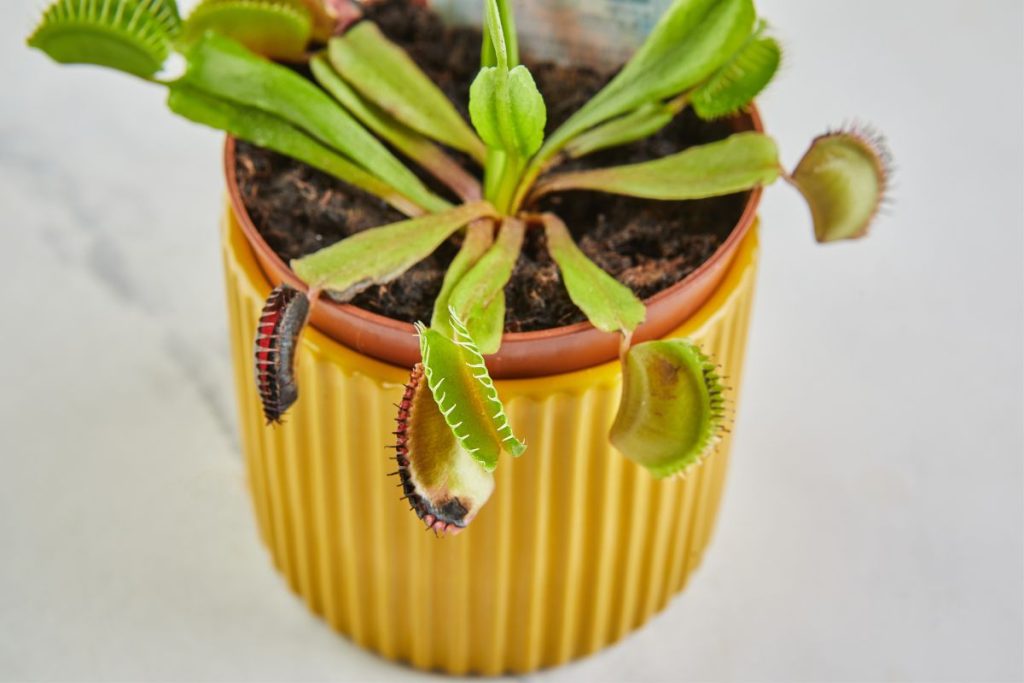
Trimming the black leaves will help keep your plant healthy and promote its growth. Pruning techniques, such as removing dead leaves, can help avoid overcrowding and give new leaves room to bud. There are several benefits to pruning: it helps get rid of extra weight in the plant, prevents overcrowding, and encourages new leaf growth. It’s important to note that you don’t need to trim your Venus flytrap every week; a monthly trimming should be enough. Doing so will ensure that your plant remains healthy and continues growing!
Separate Multiple Plants to Accommodate Bulb Root Reproduction
If your plant is producing multiple bulbs, consider separating them for further growth. Repotting techniques should be used to safely separate the plants and ensure optimal growing conditions. This will benefit both plants as they will have more space and resources available to achieve bigger sizes. Separating the plants can also help with straightening the stems of each individual plant. Having two individual containers allows you to apply different care techniques for each one if needed, which can result in healthier Venus flytrap plants that reach larger sizes.
Choose from a Wide Range of Venus Flytrap Varieties
If you’re looking for a large Venus flytrap, try a cultivar like the B-52 or Dionaea Ginormous variety—their traps reach up to two inches in length. When choosing the right variety of flytrap for your needs, consider how easily they can capture bugs and whether their traps will function properly. Tips on caring for a large flytrap include providing plenty of light and ensuring the soil stays moist. The benefits of growing a large flytrap are that they can trap more insects than smaller varieties and they make an impressive statement in any garden.
How to Propagate Venus Flytrap
Propagating Venus flytrap is best done through division or leaf cuttings. To propagate by division, the best time to do this is late winter to spring. Gently remove the plant from its container and use a sharp knife to cut it into two or more sections, making sure each section has some of the root system attached. Immediately repot each division in individual pots filled with a perlite/peat moss mix for good drainage.
When propagating from leaf cuttings, carefully pull down and out on an entire leaf, including a tiny bit of rhizome at the end. Place one or several leaves into a pot with a well-draining potting medium and cover the pot with a plastic bag to keep it from drying out. As any leaves turn black, trim them off.
After around six months you should begin seeing tiny recognizable Venus flytraps appear in your pot – if there are several plants growing together in one pot, separate them at this point for optimal growth! For successful propagation techniques and safe caring for your leaf cuttings try troubleshooting any potential issues that might arise along the way.

Pests and Problems
Take care of pests and problems that may arise for your Venus flytrap, such as aphids, spider mites, fungus gnats, or black leaves. To prevent an aphid infestation, submerge the plant in distilled water for two days then wait a week and repeat the process. An insecticidal soap or neem oil is also effective against spider mites. For fungus gnats, drench the soil with Bacillus thuringiensis (BT).
To avoid attracting them further keep the soil slightly moist but not soggy. Black leaves may indicate a dormant period. However, if humidity levels are low or if you let the plant dry out too often it can cause blackened foliage too—this can’t be saved so trim off these parts of the plant. By following these steps you’ll help ensure that your Venus flytrap will stay healthy and grow big!
Conclusion
You’ve come a long way, and now you know how to make a Venus flytrap grow big. It’s not easy, but with proper care and attention, you can have a giant of a plant! You can propagate them too, so the possibilities are endless. Just remember that pests and problems may arise, so be sure to tend to your flytrap regularly! With patience and effort, your Venus flytrap will reach new heights – quite literally.
